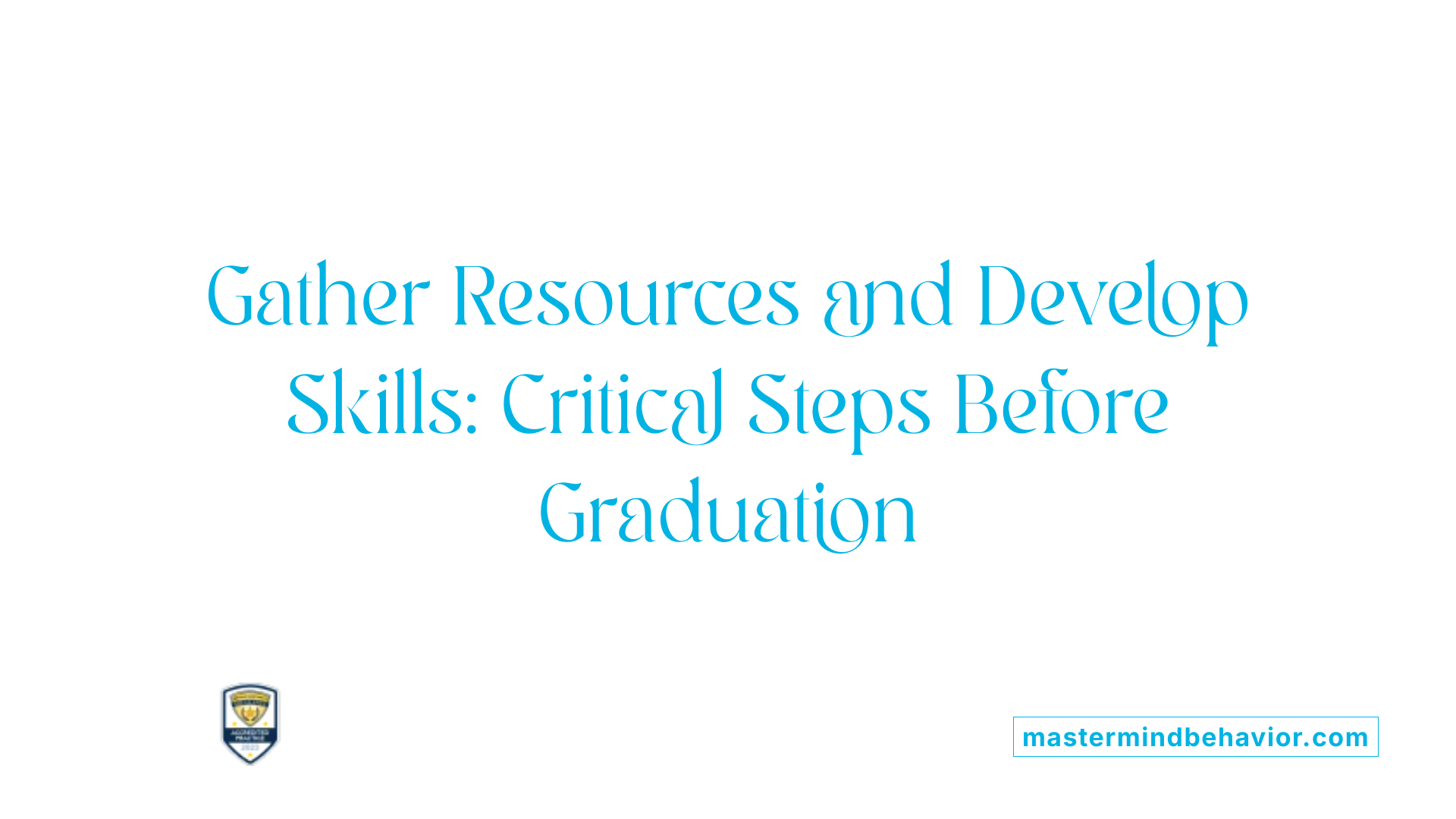Preparing for Transition to Adult Services With ABA Foundations

Understanding the Pathway to Adult Independence
Transitioning from childhood to adulthood for individuals with autism is a complex process that requires early planning, tailored support, and continuous development of essential life skills. Central to this journey is the implementation of Applied Behavior Analysis (ABA), an evidence-based approach that prepares young individuals for independent living, employment, and community integration. This article explores how ABA foundations facilitate a successful transition, highlighting strategies for families, the importance of skill development, and resources available to support this pivotal phase.
Early Foundations and Planning for Transition

How does early and consistent ABA intervention influence successful adulthood integration for individuals with autism?
Applied Behavior Analysis (ABA) therapy, when started early and delivered consistently, plays a pivotal role in helping individuals with autism develop essential life skills. This evidence-based approach focuses on improving communication, social interactions, and adaptive behaviors, which are critical for independent living and employment.
Research indicates that children receiving sustained ABA therapy—often recommended up to 40 hours per week—show significant gains in intellectual development, social skills, and behavioral regulation. These improvements lay a strong foundation for successful transition into adulthood, including pursuing employment, managing self-care, and navigating social environments.
Parental involvement and prior experiential learning through special education enhance ABA's effectiveness. Nevertheless, challenges like access barriers and high treatment dropout rates highlight the importance of exploring methods such as parent-led or remote programs to maintain consistent intervention.
Altogether, consistent early intervention with ABA builds necessary skills that extend into adult life, improving long-term outcomes and increasing integration success.
Beginning transition planning around age 12-14
Transition planning should start early—around ages 12 to 14—to lay groundwork for adult independence. This early phase involves education, skill development, and exploring resources that support future goals.
Parents and caregivers are encouraged to familiarize themselves with programs like the Florida Medwaiver, which provides services such as ABA, supported employment, and independent living supports. Initiating application procedures early helps avoid delays, given long waitlists.
Developing a comprehensive transition plan includes setting long-term goals—such as living independently or attending day programs—and outlining actionable steps to achieve these objectives.
At this stage, it is vital to focus on building skills like self-advocacy, money management, healthcare navigation, and social skills, which are necessary for adult success.
Utilizing checklists for pre-graduation tasks
Checklists serve as practical tools to ensure all essential steps are completed before graduation and transition to adult services. Typical pre-graduation actions include applying for a state ID, Social Security benefits, and connecting with adult service providers.
These checklists help families stay organized and ensure that no critical tasks are overlooked during this busy period. Visual supports like charts, alarms, and signage can enhance independence and help the individual understand and complete these tasks.
Planning ahead reduces gaps in services and supports, providing a smoother transition into adult life.
| Aspect | Action | Considerations |
|---|---|---|
| Medical/Legal | Obtain state ID, apply for Social Security | Ensures access to resources and benefits |
| Service Coordination | Find adult providers, enroll in Medwaiver | Important due to long waitlists |
| Skill Development | Focus on independent living, self-advocacy | Prepare for daily life and work |
| Transition Planning | Use checklists and visual supports | Aid in organization and adherence |
Resources and support
Families should leverage available resources such as the Florida Medwaiver Program, which offers critical services like ABA, residential support, and employment assistance.
The Disability Rights Florida and the Center for Autism and Related Disorders provide guidance, training, and support tools tailored for transition planning.
Early and proactive engagement with these resources helps families secure timely support, advocate effectively, and ensure that their child's transition is as smooth as possible.
By understanding and preparing for each step, families can foster independence, enhance quality of life, and promote lifelong success for individuals with autism.
Key Skills and Developmental Goals for Transition Success

What skills and developmental goals should be prioritized for adolescents and young adults with autism?
Prioritizing the development of specific skills is essential for a successful transition into adulthood for individuals with autism. Goals should include fostering communication abilities—such as expressive speech, picture exchange, or sign language—and social skills that promote community engagement and safety.
Independent living skills are vital, covering areas like self-care routines, meal preparation, and money management. Additionally, vocational skills, including job readiness and workplace behavior, should be emphasized.
Self-advocacy and decision-making capabilities are equally important. Teaching young adults how to express their needs, navigate healthcare systems, and access community resources boosts their independence.
Creating individualized, measurable objectives—often structured within frameworks like SMART goals—helps track progress and tailor interventions effectively.
Transition planning should occur early, involving families, educators, and healthcare providers. Discussions about accommodations like 504 plans, legal considerations, and financial planning are crucial.
Focusing on strengths such as attention to detail, reliability, and honesty can enhance employment opportunities. Soft skills like teamwork, patience, and problem-solving also support social inclusion.
In sum, supporting a broad set of skills aligned with each person’s interests and challenges empowers autistic youth to attain greater independence and participate fully in society.
How does ABA therapy support skill development during transition to adulthood?
Applied Behavior Analysis (ABA) plays a pivotal role in equipping individuals with autism for the challenges of adulthood. Through personalized, systematic interventions, ABA helps develop essential skills like communication, social interaction, self-care, and daily living.
The therapy employs evidence-based strategies such as positive reinforcement, visual supports like checklists and alarms, and structured teaching methods. These approaches improve understanding, facilitate routine learning, and manage behaviors.
ABA intervention is tailored over several years, with regular assessments ensuring goals are met. The therapy emphasizes adaptive behavior development, which directly impacts independence.
As progress occurs, ABA programs can be gradually tapered or transitioned into less intensive supports, aiding seamless integration into community and workplace settings.
Furthermore, ABA fosters self-advocacy by teaching individuals to recognize their needs and communicate effectively. This ongoing support builds confidence, resilience, and social participation in natural environments.
Overall, ABA provides a robust foundation for developing the skills necessary for purposeful and self-directed adult life.
Resources for Supporting Transition and Skill Development
| Resource | Description | How It Aids Transition |
|---|---|---|
| Florida Medwaiver Program | Offers services like ABA, supported employment, and residential support | Secures funding and access to critical services early |
| Disability Rights Florida | Provides legal and advocacy support | Ensures rights are protected and accommodations are implemented |
| Center for Autism and Related Disorders | Offers specialized training and intervention strategies | Guides families and providers in effective planning |
Consistent use of these resources, combined with early planning and tailored goals, enhances the success rate of transitioning into independent adult roles.
Transitioning to Adult Services: The Process and Key Strategies

What is the process for transitioning from pediatric to adult services for individuals with autism?
The transition from pediatric to adult services is a crucial phase that begins well before the individual reaches 18 years of age. Typically starting around age 14, this process involves detailed planning and collaboration among healthcare providers, families, and the individuals themselves. Early steps include organizing medical records, understanding how communication preferences will change, and teaching skills needed for healthcare decision-making.
An essential part of this transition is coordinating efforts between pediatric and adult healthcare systems. This ensures continuity of care and helps prevent gaps in services. Resources like Got Transition provide structured checklists and guidance to support families through this process. These guides help prepare individuals to manage appointments, understand confidentiality rules beyond age 18, and develop independence in healthcare management.
Transition strategies emphasize a gradual transfer, allowing the individual to gain confidence and skills at their own pace. Shared decision-making becomes more prominent, with a focus on person-centered planning. Addressing often-overlooked topics such as sexual health and lifestyle choices is also vital to support overall well-being. Successful transfers rely on education for providers about autism-specific needs and flexible plans that adapt to the individual’s readiness. Ultimately, a thoughtful, personalized approach helps autistic individuals navigate the adult healthcare landscape with confidence.
What resources and strategies can families use to plan for adult services for individuals with autism?
Proactive planning guides families in supporting their loved ones’ move into adulthood. Key resources include organizations like Autism Speaks, which offers valuable tools such as transition planning guides, housing options, employment resources, and social support networks tailored for autistic adults.
Starting early—preferably during adolescence—is essential. Families should develop customized transition plans focused on vocational training, postsecondary education options, and independent living skills. Utilizing Individualized Education Program (IEP) services and community programs, families can explore various pathways that align with the individual’s interests and strengths.
It’s also important to seek guidance from healthcare providers and community-based organizations that are familiar with evidence-based practices for autism. These professionals can help identify the appropriate supports and services to meet healthcare, safety, and social needs.
Staying informed about legal rights, government programs like Medicaid waivers, and local community resources enhances advocacy efforts. For example, in Florida, the Medwaiver program offers critical services such as ABA therapy, residential support, supported employment, and independent living assistance.
By combining resources, early planning, and informed advocacy, families can ensure a smoother transition, helping their loved ones build skills for more autonomous and fulfilling adult lives.
Long-Term Benefits of ABA Foundations and Support Systems

What are the long-term benefits of ABA therapy and associated support systems for individuals with autism?
Applied Behavior Analysis (ABA) therapy offers remarkable benefits that extend well into adulthood for individuals on the autism spectrum. One of the most significant outcomes is increased independence. Through targeted skill-building, individuals learn essential life skills such as self-care, employment readiness, and social interaction, enabling them to live more autonomous lives.
ABA also dramatically improves educational and vocational outcomes. It helps individuals develop communication skills, problem-solving abilities, and social competence, which are crucial for workplace success and community living. As a result, many become active participants in their communities, engaging in routines, social events, and employment opportunities.
For families, ABA can bolster relationships by fostering better understanding and communication. Parents often report increased confidence in supporting their children's growth and advocating for their needs.
Beyond individual progress, ongoing community programs and continuous therapy initiatives play vital roles. These support systems promote social inclusion and societal acceptance for autistic individuals, breaking down barriers and dispelling misconceptions.
Community resources such as supported employment, independent living programs, and adult day training facilitate a seamless transition into adult roles. They help sustain the gains achieved through early therapy, ensuring that progress is maintained and built upon.
Table 1: Long-Term Impact Areas of ABA and Support Systems
| Impact Area | Description | Examples |
|---|---|---|
| Independence | Skills for self-reliance and daily living | Personal care, meal prep, money management |
| Communication | Improved social exchanges and advocacy | Speaking, signing, picture exchange systems |
| Social Integration | Participation in community and workplace | Employment, social groups, volunteer work |
| Family & Community | Enhanced relationships and societal inclusion | Family counseling, community awareness programs |
| Cost & Healthcare | Reduction in support needs and healthcare costs | Fewer emergency interventions, less institutionalization |
How do community programs and ongoing therapy contribute?
Support programs tailored for adults with autism continue to reinforce skills learned during childhood and adolescence. They provide structured environments where individuals can practice independence and social skills in real-life settings.
Ongoing therapy, including ABA, adapts to changing needs and focuses on reinforcement of complex skills like self-advocacy and emotional regulation. These programs often collaborate with vocational rehabilitation specialists, job coaches, and local agencies to create personalized plans.
Overall, sustained intervention and strong community ties result in a more inclusive society where individuals with autism can thrive, achieving personal satisfaction and contributing meaningfully to their communities.
Empowering Autistic Adults Through Comprehensive Planning
Transitioning to adulthood with autism demands proactive planning, evidence-based interventions like ABA, and the collaboration of families, educators, and service providers. Early intervention lays the groundwork for skill development, while ongoing ABA therapy supports independence and social participation. Families should be equipped with resources, knowledge, and advocacy strategies to navigate systems effectively. Emphasizing key skills—such as communication, self-advocacy, and daily living—facilitates smoother transitions and more fulfilling adult lives. With coordinated efforts across healthcare, education, and community sectors, autistic individuals can achieve their potential, foster lifelong independence, and become active, valued members of their communities.
References
- Building a Bridge: Tips for Helping Children with Autism ...
- Autism Treatment and Transition to Adulthood
- ABA Therapy for Adolescents and Young Adults with Autism
- How ABA Therapy Can Benefit Both Children and Adults
- Planning for Your Child's Successful Transition to Adult ...
- Patient Outcomes After Applied Behavior Analysis for ...
- The effectiveness of applied behavior analytic interventions ...
- Parent-Led Applied Behavior Analysis to Impact Clinical ...
Recent articles

How ABA Therapist Uses Data To Adjust Behavior Plans
Data-Driven Insights: Shaping Effective ABA Behavior Plans

ABA Therapy For Teaching Responsibility In Managing Schedules
Harnessing ABA Therapy to Cultivate Schedule Management Skills in Children with Autism

What Families Should Know About ABA Therapy Ethics And Consent
Understanding the Foundations and Ethical Framework of ABA Therapy

How ABA Providers Can Help Teachable Moments Arise Throughout the Day
Creating Learning Moments Anywhere: The Role of ABA Providers in Everyday Development

How to Navigate Autism Laws and Legal Support Services In NJ And GA
Comprehensive Legal Frameworks Supporting Autism Therapy in NJ and GA

How ABA Therapy Improves Adaptation To New School Environments
Supporting Children with Autism Transitioning into School through ABA Therapy



